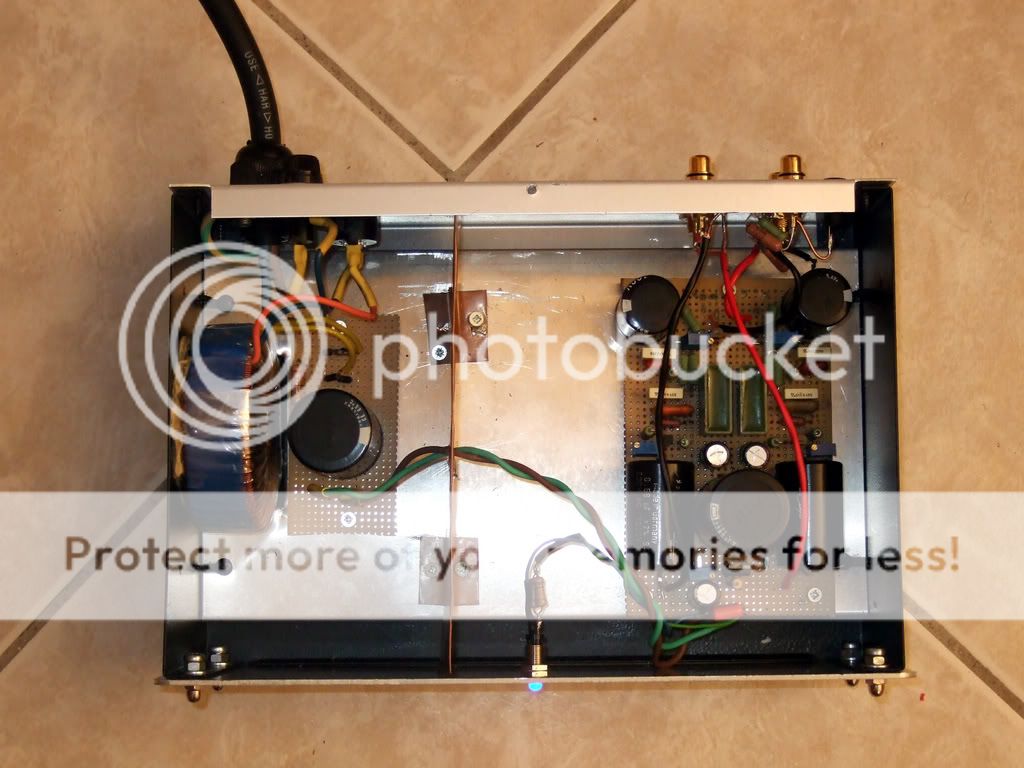Some calibration
Had to see about the Steve Bench 12AY7 parallel, ECC88 cascoded, and how it compares so to have a sonic benchmark (pun intended ).
).
That is the best we had made for tube so far. But after using both the Lundahl amorphous step up and the Dynavector DV/6Z and listening, I thought that it was hot in treble. Don't know what drives it and what it drives for Steve, but in the test system with the stripped down Ortofon Virtus and the given step ups it was bright.
I modded my RIAA for 60dB to match the Bench unit with the Lundahl step up, so to listen for that brightness. I bypassed the first JFET Rs with 1000uF for that. The brightness receded. Measured the Virtus with Omnidisc pink noise track also for reference: +/- 1.3dB with a resonance in the last octave. Many MCs like that.
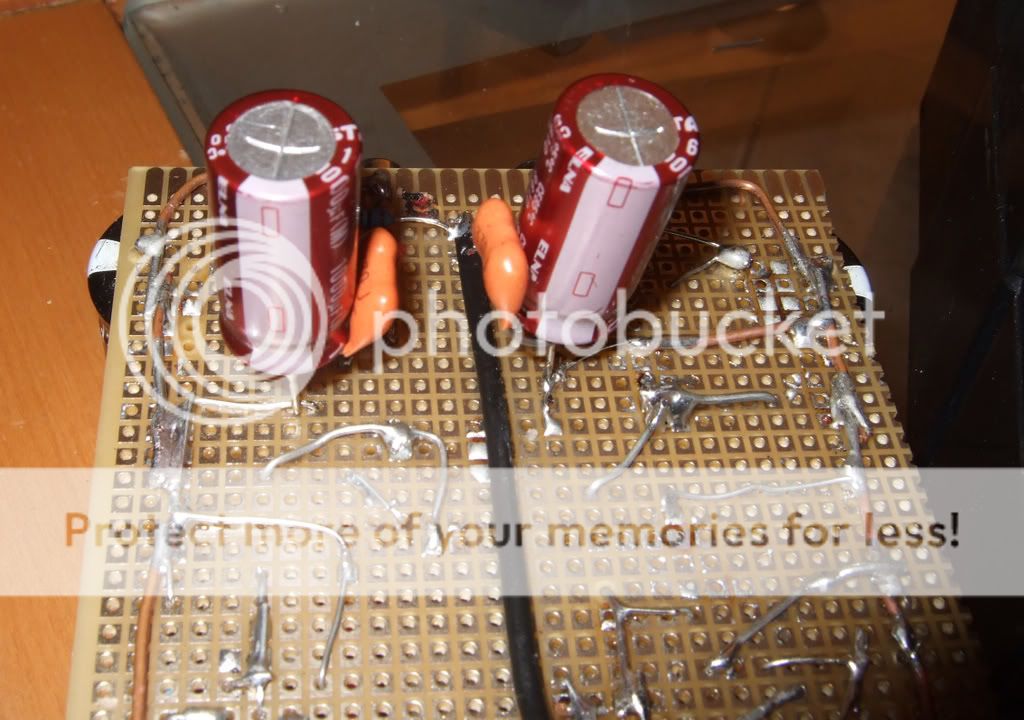
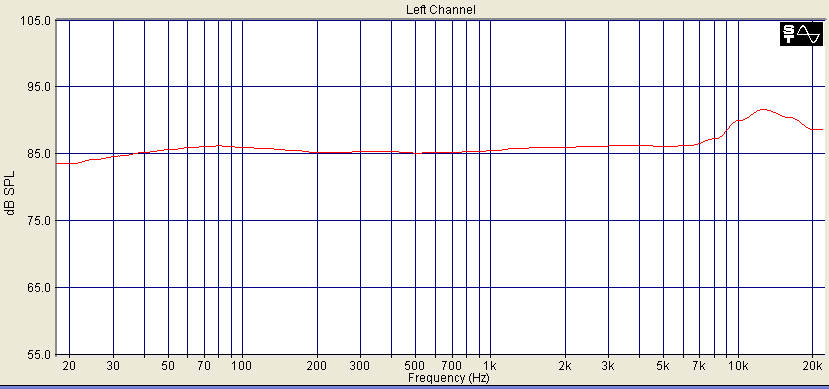
Told my mate that we have to gut the Bench unit. We lightened the loading which shaped the Virtus better. Then we calibrated its Riaa for the given set up. It originally uses 5n7 as HF Riaa cap. We measured with 8n2 and 10n4 also.
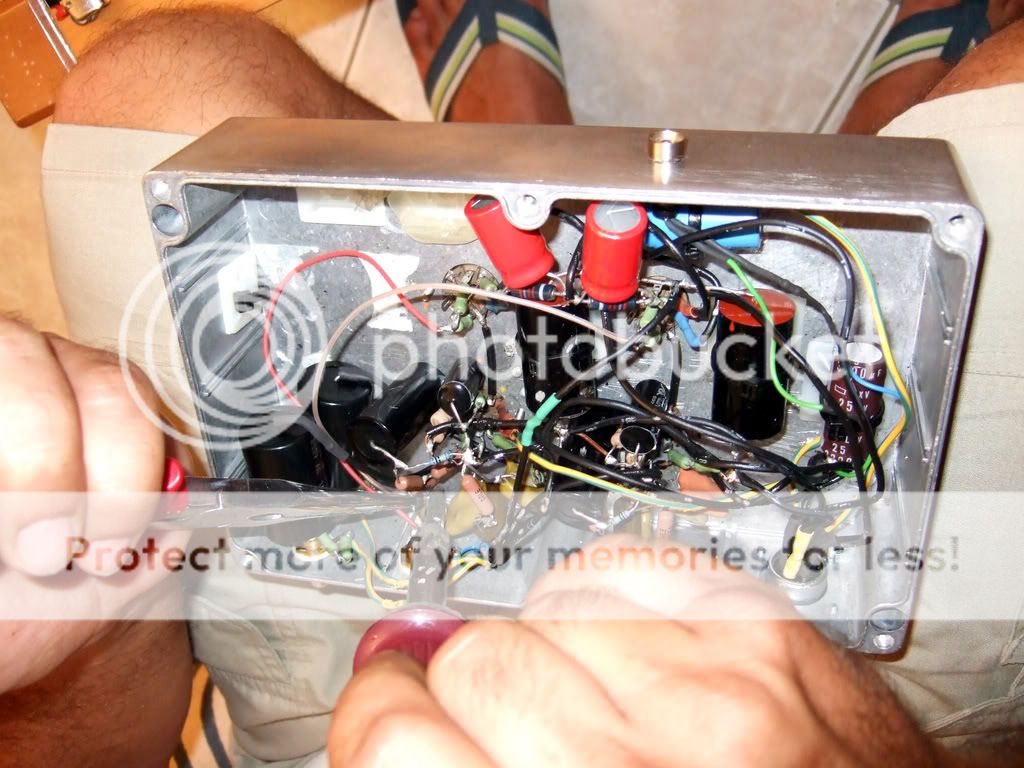
Top curve is the original 5n7, middle curve is the 8n2, bottom is the 10n4. The middle one matches the (well checked) Salas Riaa. We listened to the bottom one too but it got a bit heavy due to the Virtus slight bass lift. So the middle one was left in. The reticence towards 20Hz is due to the PC cards low input Z and the relative small coupling caps calculated to drive 50K with some attenuation under 10Hz for record warp.
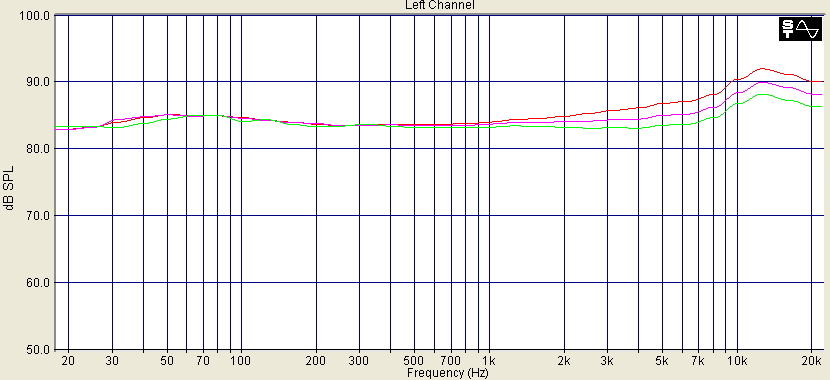
After that the gain and the transfer curves were matched we listened more to the 2 Riaa units. The tube unit has better instrument definition and more interplay. Its tone is a bit truer too. The JFET unit follows so closely that it is a miracle. Both they are superb. I have to use better resistors and listen to a regulator PSU too. Then I will tell you more for the Salas Riaa. Best thing so far is that it got 5dB more WITHOUT audible change. Ah, I shorted the 100R gate stoppers, no change in noise, no oscillation. Leave them out, it helps sonically.
Had to see about the Steve Bench 12AY7 parallel, ECC88 cascoded, and how it compares so to have a sonic benchmark (pun intended
That is the best we had made for tube so far. But after using both the Lundahl amorphous step up and the Dynavector DV/6Z and listening, I thought that it was hot in treble. Don't know what drives it and what it drives for Steve, but in the test system with the stripped down Ortofon Virtus and the given step ups it was bright.
I modded my RIAA for 60dB to match the Bench unit with the Lundahl step up, so to listen for that brightness. I bypassed the first JFET Rs with 1000uF for that. The brightness receded. Measured the Virtus with Omnidisc pink noise track also for reference: +/- 1.3dB with a resonance in the last octave. Many MCs like that.


Told my mate that we have to gut the Bench unit. We lightened the loading which shaped the Virtus better. Then we calibrated its Riaa for the given set up. It originally uses 5n7 as HF Riaa cap. We measured with 8n2 and 10n4 also.

Top curve is the original 5n7, middle curve is the 8n2, bottom is the 10n4. The middle one matches the (well checked) Salas Riaa. We listened to the bottom one too but it got a bit heavy due to the Virtus slight bass lift. So the middle one was left in. The reticence towards 20Hz is due to the PC cards low input Z and the relative small coupling caps calculated to drive 50K with some attenuation under 10Hz for record warp.

After that the gain and the transfer curves were matched we listened more to the 2 Riaa units. The tube unit has better instrument definition and more interplay. Its tone is a bit truer too. The JFET unit follows so closely that it is a miracle. Both they are superb. I have to use better resistors and listen to a regulator PSU too. Then I will tell you more for the Salas Riaa. Best thing so far is that it got 5dB more WITHOUT audible change. Ah, I shorted the 100R gate stoppers, no change in noise, no oscillation. Leave them out, it helps sonically.
The 60dB Salas Riaa at work
The test system uses a stripped Ortofon Virtus (0.20mV) on ADC carbon arm. The spins are courtesy of a Walker 55. The Riaa units drive a Salas 6V6 line, and the power comes from reissued KT88 Golden Lions wired in PP triode. Lundahl OPTs, 12AY7 parallel input, 12AT7 phase splitter. Circuit by me. The speakers are 2 ways using Seas CA22RNY 8 inch treated paper and Peerless HDS tweeter, in natural hardwood box. Designed by you guess who. All this stuff belongs to my pal Michael, that he never bothers to present them here.
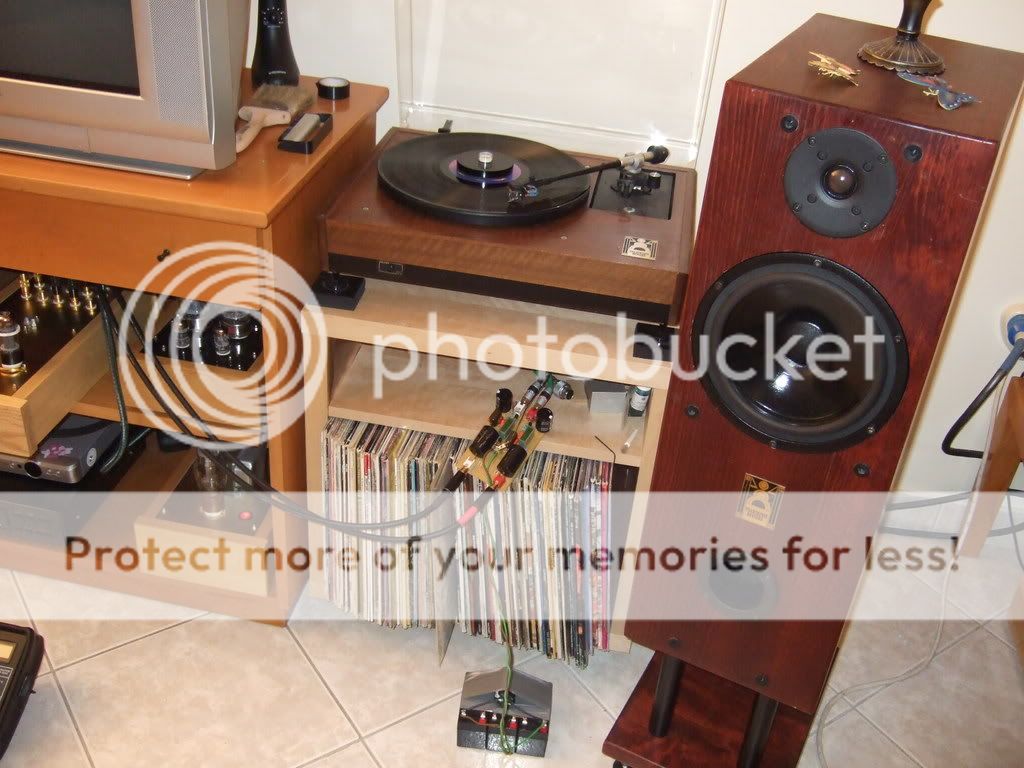
The test system uses a stripped Ortofon Virtus (0.20mV) on ADC carbon arm. The spins are courtesy of a Walker 55. The Riaa units drive a Salas 6V6 line, and the power comes from reissued KT88 Golden Lions wired in PP triode. Lundahl OPTs, 12AY7 parallel input, 12AT7 phase splitter. Circuit by me. The speakers are 2 ways using Seas CA22RNY 8 inch treated paper and Peerless HDS tweeter, in natural hardwood box. Designed by you guess who. All this stuff belongs to my pal Michael, that he never bothers to present them here.

salas said:I will use the 160 in my system with 55dB in the end, I got one too.
yes your denon dl-160 +jfer just to know if we have the same impression ...
Final phono
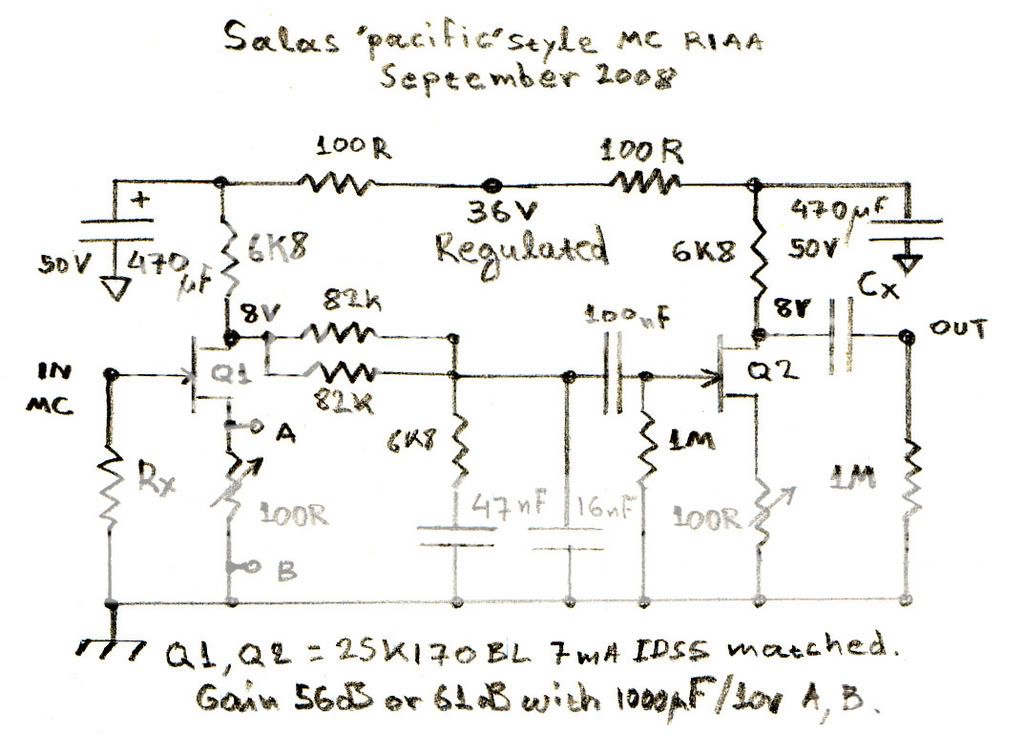
That is the final thing. I took some additional practical measures, like making the second stage input resistor 1M instead of 2M because I have seen that some 2SK170BL may leak grid to gate current more readily than others and make the bias wander. I also used 10 turn trimmers so to be able lock the Vd readings for totally the same RMS output between channels even overcoming MC cartridge channel imbalance.
The JFETS are chosen for 7mA IDSS and you can use fairly well matched pairs per position and channel between 7-8mA IDSS. Built a regulator with R-C filter before the LM317T. It adds some extra dB of performance. You can start with 48V rectified, drop 8V on the R and regulate at 34-36VDC. Use a capacitor bypassed trimmer for the 317T B+ so you can shoot for about 8V Vd on the JFETS drain without over degenerating them with the source trimmers. Sounds better than the battery, has more musical contrast and firmer bass. In total it really sings.
The Rx is your choice load resistor. I have measured no loss of output with 1K for MC cartridges of 0.2mV-0.5mV and with 10K for Denon 1.6mV 160 Ohm source. From around half those values and lower I have seen progressive loss of output without any real change in FR shapes.
The Cx is the output capacitor value that I chose for -10dB @ 2Hz so to attenuate possible record warp. For driving 100k is 0.68uF, 1.5uF for 50k, 3.3uF for 20k and 6.8uF for 10k.
The 56dB gain @ 1kHz was fine for 0.5mV MC and really strong with high MC. You may attach a 1000uF/10V very high quality capacitor at points A,B to get an additional 5-6dB for those 0.2mV MCs if your line stage has moderate gain. The +cap goes to point A. I did not hear any sonic penalty when I have tested that.
I don't recommend ''pacific style'' RIAA stages like this one for MM, because of the 300-400pF input capacitance they accumulate due to Miller effect and 2SK170 Ciss. Add 100-150pF from input cabling and MM use a real no no in my book. Especially the Salas RIAA has too much gain for MM anyway.
All in all this is a truly excellent no global feedback MC phono stage, the value for money project factor shoots through the roof. Its very clear, bouncy, and easy on the ear with no harshness at all but preserves that inner musical freshness and light.

That is the final thing. I took some additional practical measures, like making the second stage input resistor 1M instead of 2M because I have seen that some 2SK170BL may leak grid to gate current more readily than others and make the bias wander. I also used 10 turn trimmers so to be able lock the Vd readings for totally the same RMS output between channels even overcoming MC cartridge channel imbalance.
The JFETS are chosen for 7mA IDSS and you can use fairly well matched pairs per position and channel between 7-8mA IDSS. Built a regulator with R-C filter before the LM317T. It adds some extra dB of performance. You can start with 48V rectified, drop 8V on the R and regulate at 34-36VDC. Use a capacitor bypassed trimmer for the 317T B+ so you can shoot for about 8V Vd on the JFETS drain without over degenerating them with the source trimmers. Sounds better than the battery, has more musical contrast and firmer bass. In total it really sings.

The Rx is your choice load resistor. I have measured no loss of output with 1K for MC cartridges of 0.2mV-0.5mV and with 10K for Denon 1.6mV 160 Ohm source. From around half those values and lower I have seen progressive loss of output without any real change in FR shapes.
The Cx is the output capacitor value that I chose for -10dB @ 2Hz so to attenuate possible record warp. For driving 100k is 0.68uF, 1.5uF for 50k, 3.3uF for 20k and 6.8uF for 10k.
The 56dB gain @ 1kHz was fine for 0.5mV MC and really strong with high MC. You may attach a 1000uF/10V very high quality capacitor at points A,B to get an additional 5-6dB for those 0.2mV MCs if your line stage has moderate gain. The +cap goes to point A. I did not hear any sonic penalty when I have tested that.
I don't recommend ''pacific style'' RIAA stages like this one for MM, because of the 300-400pF input capacitance they accumulate due to Miller effect and 2SK170 Ciss. Add 100-150pF from input cabling and MM use a real no no in my book. Especially the Salas RIAA has too much gain for MM anyway.
All in all this is a truly excellent no global feedback MC phono stage, the value for money project factor shoots through the roof. Its very clear, bouncy, and easy on the ear with no harshness at all but preserves that inner musical freshness and light.
"I don't recommend ''pacific style'' RIAA stages like this one for MM, because of the 300-400pF input capacitance"
Easy to cascode the input FET, if you don't need all that gain.
You can even make a folded cascode there, as I indicated on this site a couple of years ago.
BTW, the series dropper resistor and capacitor combos in each FET's supply can be used to tune the sound. I played such games with Pacific-style circuits 8 or 9 years ago.
Easy to cascode the input FET, if you don't need all that gain.
You can even make a folded cascode there, as I indicated on this site a couple of years ago.
BTW, the series dropper resistor and capacitor combos in each FET's supply can be used to tune the sound. I played such games with Pacific-style circuits 8 or 9 years ago.
True, it can be cascoded, SRPP etc, but it won't be a Pacific class circuit anymore, strictly speaking.  But it can be done for MM use, no doubt.
But it can be done for MM use, no doubt.
I have listened to the combination of the values and parts quality carefully against the Steve Bench cascoded double12AY7 & ECC88 stage with a Dyna DV6Z silver step up cylinder included under the bonnet. Tried to strike the most natural balance between 3 different output level MC carts and to follow the tube tone. As it can be seen in the photo, there are Soviet Silver Mica caps bypassing Siemens MKP in RIAA, Soviet Polystyrene coupling to the second stage, Mundorf Silver/Oil output coupler, Kiwame for Rd, Rs//trimmer, RIAA & RC filt. Dale // Kiwame for RLoad. Electrolytics are Panasonic TSW for first stage local bypass, Elna For Audio 2nd stage bypass, PSU RC filter and adj 317 bypass, out. UF4007 diodes.
If someone wants to just copy all the details, rest assured, its a valid mix as you see it. Of course, tastes and systems may vary wildly. Judge on your own.
I have listened to the combination of the values and parts quality carefully against the Steve Bench cascoded double12AY7 & ECC88 stage with a Dyna DV6Z silver step up cylinder included under the bonnet. Tried to strike the most natural balance between 3 different output level MC carts and to follow the tube tone. As it can be seen in the photo, there are Soviet Silver Mica caps bypassing Siemens MKP in RIAA, Soviet Polystyrene coupling to the second stage, Mundorf Silver/Oil output coupler, Kiwame for Rd, Rs//trimmer, RIAA & RC filt. Dale // Kiwame for RLoad. Electrolytics are Panasonic TSW for first stage local bypass, Elna For Audio 2nd stage bypass, PSU RC filter and adj 317 bypass, out. UF4007 diodes.
If someone wants to just copy all the details, rest assured, its a valid mix as you see it. Of course, tastes and systems may vary wildly. Judge on your own.

I will do Salas but some delay as my TT arrived with supex901 2mv ,good cartridge to play some time.....
In the meantime a study for new cartridge ,dynavector 10x5 is in my short list (2,5mv)...what is very crazy is on dl103 after I read all WWW in 4 full day 50% like 50% dislike
 !!!!!!!!!!
!!!!!!!!!!the last is zxy bloom but too much money after TT
As component
siemens polystyrene for riaa
mundorf supreme for 100nf and Cx
resistor vishay nude,caddoc ,riken, AB
Ska minireg
dual mono config
good toroid with screnn
4 ofc rca
fast diode
2 10000mf mundor
2-3 shipping cost in the end 150-200€ ! before I need to choose cartridge... output......
siemens polystyrene for riaa
mundorf supreme for 100nf and Cx
resistor vishay nude,caddoc ,riken, AB
Ska minireg
dual mono config
good toroid with screnn
4 ofc rca
fast diode
2 10000mf mundor
2-3 shipping cost in the end 150-200€ ! before I need to choose cartridge... output......
- Home
- Source & Line
- Analogue Source
- Simplistic NJFET RIAA

